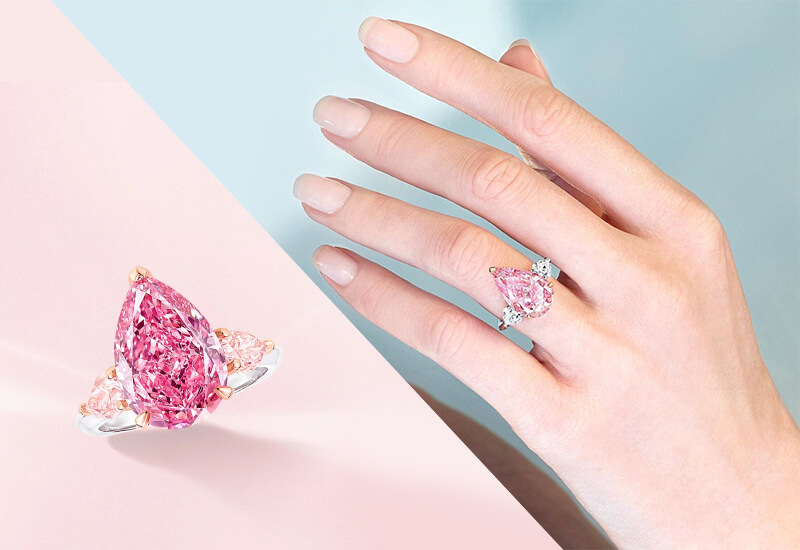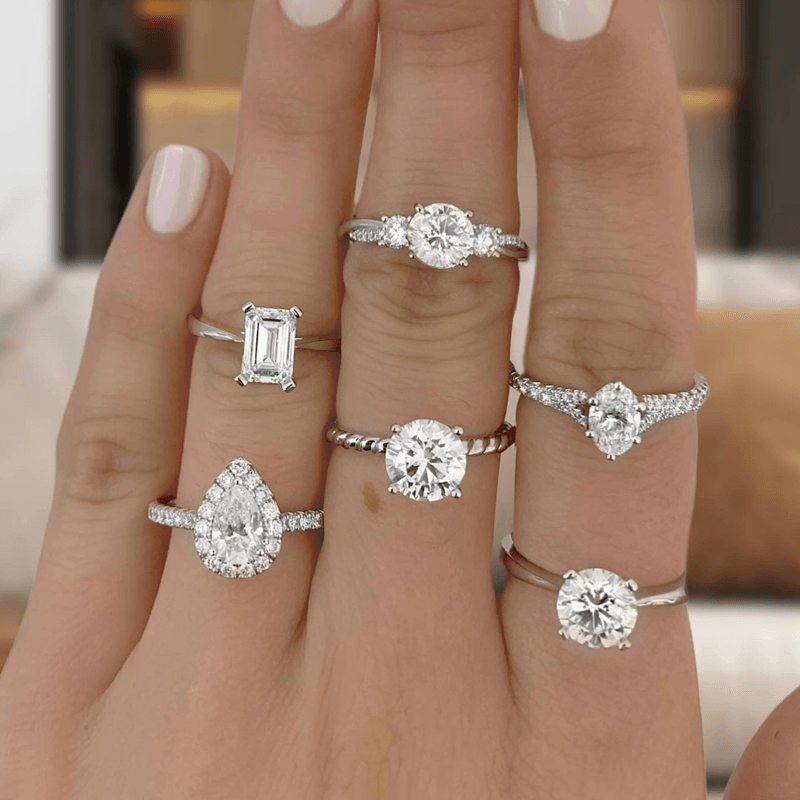Introduction: The Moissanite Revolution
Moissanite is gaining more and more traction as an affordable and ethical alternative to diamonds. Whether you’re searching for a ring that dazzles without the strong sticker price, or you’re basically attempting to find a stone that is more sustainable, moissanite could appear to be an ideal solution. However, because it sparkles splendidly doesn’t mean it’s ideal.
Before you choose to put resources into a moissanite piece, it’s important to perceive that while it offers many advantages, there are a couple of significant drawbacks that could affect your purchase decision.
What is Moissanite?
Moissanite is a gemstone that was first discovered in 1893 by the French chemist Henri Moissan. He found smidgens of the material in a meteor crater, which prompted its initial association with space! 모이사나이트 단점 is currently generally lab-created, which makes it both more affordable and more ethical than many different gemstones on the market.
While it could seem to be a diamond, moissanite is made from silicon carbide. This compound gives it a remarkable brilliance and hardness, making it profoundly popular for use in rings and other gems.
History and Discovery of Moissanite
Henri Moissan’s discovery of the stone was a breakthrough, however it required nearly hundred years for the stone to be manufactured for commercial use. Today, most moissanite is filled in labs, so it’s generally accessible, affordable, and available in various shapes and sizes.
How Moissanite is Made
Moissanite is primarily made in laboratories utilizing a process known as chemical vapor deposition (CVD). This process allows scientists to create stones that are virtually identical to natural moissanite however considerably more affordable.
Moissanite versus Diamond: A Speedy Comparison
While considering a moissanite purchase, it’s essential to compare it to diamonds, since they are the most common alternatives.
Cost Contrasts
Moissanite is significantly more affordable than diamonds. A moissanite stone can cost anywhere from 1/tenth to 1/third of the cost of a diamond, contingent upon size and quality. For many individuals, this makes moissanite a substantially more accessible option for a gemstone that actually looks unquestionably dazzling.
Durability Comparison
Diamonds are known for their superior durability and are the hardest known natural material on Earth. Moissanite, while hard (it scores 9.25 on the Mohs scale of hardness), is not as hard as diamonds, which can affect its long-term durability.
Visual Contrasts: Sparkle and Brilliance
One of the characterizing features of moissanite is its sparkle. Moissanite shows a higher refractive record than diamonds, and that means it can some of the time display more “fire” or rainbow-colored flashes. In any case, this sparkle may be viewed as a lot for some, as it doesn’t replicate the unobtrusive, white brilliance of diamonds.
Disadvantages of Moissanite
While moissanite has many appealing qualities, it is not without its disadvantages. We should take a more profound gander at the most notable cons of picking moissanite.
1. Lower Resale Value
One of the greatest disadvantages of moissanite is its relatively low resale value. While diamonds are known to hold (and frequently increase in) value after some time, moissanite doesn’t have the same resale appeal. Assuming you’re wanting to sell your gems down the line, it’s important to know that moissanite likely won’t get a lot of on the resale market.
2. Less Durability Over the long run
While moissanite is durable, it’s not as scratch-resistant as diamonds. Over the long run, moissanite may foster more noticeable scratches and indications of wear, especially in the event that roughing conditions is uncovered. On the off chance that you’re searching for a piece that will last forever without losing its sparkle, diamonds have the edge.
3. Moissanite Can Look Fake
The sparkling impact of moissanite can some of the time be overpowering or “to an extreme.” Certain individuals find that the extra sparkle makes the stone look unnatural, or even fake, compared to a diamond’s unobtrusive brilliance. On the off chance that you’re searching for a gemstone that copies the classic beauty of a diamond, moissanite’s serious fire probably won’t be ideal.
4. Powerless to Scratching
Although moissanite is relatively hard, it’s not invulnerable to scratching. Moissanite ranks 9.25 on the Mohs hardness scale, while diamonds score an ideal 10. This means that over the long haul, moissanite can accumulate scratches, particularly on the surface, whenever presented to harsh conditions.
5. Restricted Color Options
Moissanite is usually available in a color range from near-colorless to faint yellow or grayish tones. While diamonds can arrive in a variety of colors (from the clear whites to vibrant blues or even rare reds), moissanite is less versatile in this regard. It’s harder to find colored moissanites, which may be a drawback for those looking for a remarkable or explicit shade.
6. Potential for Yellowish Color
While moissanite is frequently marketed as a “colorless” stone, it can now and then display a faint yellowish color, especially in larger stones. The color of moissanite is not always as consistent as an excellent diamond, and this may not be ideal for those searching for a flawless, totally white stone.
7. Not Always Broadly Perceived
While moissanite is turning out to be more popular, it’s as yet not as notable as diamonds. On the off chance that you’re purchasing a piece for its tasteful value yet additionally want it to be easily perceived by others, you may be disappointed. Certain individuals may mistake moissanite for a bad quality diamond, which can be frustrating for the people who want their gems to be valued for its actual worth.
8. Environmental and Ethical Concerns
Although moissanite is lab-created, the process of creating it requires energy and raw materials. While it is certainly more ethical than mined man made diamonds, it’s not totally liberated from environmental concerns. Certain individuals like to purchase gemstones from ethical sources or those with minimal environmental impact, which could make moissanite less appealing for certain purchasers.
9. May Prone to Cloud
After some time, some moissanite stones may foster an overcast or smooth appearance. This can be particularly evident on the off chance that the stone is not cared for as expected. Regular cleaning is essential to maintain its clarity and brilliance.
Addressing Common Misconceptions about Moissanite
Before dismissing moissanite totally, clearing up a few common misconceptions is important.
Is Moissanite “Fake” or “Not Real”?
Many individuals mistakenly accept that moissanite is “fake” because it’s an engineered stone. Notwithstanding, moissanite is genuine, similarly as real as a diamond or any other gemstone. It has own remarkable properties and qualities make it a valuable stone by its own doing.
Does Moissanite Lose Its Sparkle?
No, moissanite doesn’t lose its sparkle over the long run. In fact, it retains its brilliance better than many different stones. Be that as it may, its novel sparkle may be excessively serious for certain individuals’ tastes, which can make it seem like it lacks the immortal nuance of diamonds.
Does Moissanite Have the Same Longevity as Diamonds?
While moissanite is durable and long-lasting, it doesn’t match diamonds with regards to longevity. Diamonds are virtually indestructible, whereas moissanite, while resistant to scratching, can eventually give indications of wear. It’s not as strong over the long haul, which may be important in the event that you’re searching for a lifetime piece.
Is Moissanite Ideal for You? Pros and Cons Recap
Ultimately, whether moissanite is ideal for you relies upon your priorities.
Who Ought to Pick Moissanite?
Moissanite is a great decision on the off chance that you’re searching for a beautiful, affordable, and ethical stone. Ideal for those want a dazzling piece without breaking the bank. Also an ideal decision for those are ethically-disapproved and want to avoid conflict diamonds.
To explore our beautiful and premium quality diamonds, you can visit our website novitadiamonds.co.kr. On our site, you can easily select the perfect diamond for yourself
When to Avoid Moissanite
On the off chance that you’re searching for a stone that holds its value or copies the classic look and durability of a diamond, moissanite probably won’t be your smartest choice. It’s also not the ideal decision on the off chance that you’re after a stone that will slip through the cracks for its “natural” beauty — moissanite’s sparkle can be all in all too clear for certain tastes.
Conclusion: Gauging the Advantages and Drawbacks of Moissanite
Moissanite offers an attractive alternative to diamonds with its staggering sparkle, affordable cost, and ethical advantages. Be that as it may, it’s important to carefully consider its disadvantages —, for example, its lower resale value, potential for scratching, and occasional yellowish color — before making your decision.















